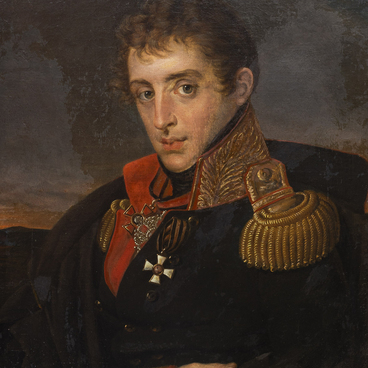Dmitry Petrovich Neverovsky came from the Little Russian nobility. In 1786, he entered the Semyonovsky Life Guards Regiment as a soldier, and in 1787 he was transferred in the rank of a lieutenant to the Little Russia Cuirassier Regiment.
He participated in the Russo-Turkish War in 1787–1791. He fought at Malaya Salcha and captured the Bender Fortress. As part of the Yekaterinoslav Jaeger Corps, he proved himself in the Polish campaigns, for which he was awarded the ranks of captain and then second major.
In 1803 he became a colonel. Dmitry Neverovsky was appointed commander of the 1st Naval Regiment. In 1804, Neverovsky received the rank of major general and was appointed chief of the 3rd Naval Regiment. Three years later, the military commander was made chief of the Pavlovsk Grenadier Regiment.
In 1811, he began forming the 27th Infantry Division. In the campaign of 1812, he distinguished himself in the battles of Krasny, Smolensk, and Shevardino. In the Battle of Borodino, he defended the Bagration flèches, where he was injured in the chest and left side of his torso. After the Battle of Maloyaroslavets, Neverovsky was awarded the rank of lieutenant general.
In the Battle of Leipzig on October 6, 1813, he was gravely wounded by a bullet in the leg: the bone was crushed. Dmitry Petrovich Neverovsky died of a blood infection. The commander was buried in Halle. In 1912, his remains were moved to the Borodino field and buried on the southern Bagration flèche. Neverovsky was awarded the Orders of St. George, 3rd class, St. Vladimir, 2nd class, St. Anna, 1st class, and the Cross “For the Capture of Prague”.
The portrait of Dmitry Neverovsky made by an unknown artist was donated to the Borodino Museum in 1948 by the general’s relatives, who had previously kept it as a family heirloom. The artist portrayed Neverovsky in a general’s military uniform of the 1808 model.
It is curious that in the portrait by George Dawe from the Military Gallery of the Winter Palace, the Order of St. Vladimir of the 2nd class is missing. Despite the low pictorial quality of the painting from the museum’s collection, it is of interest as an example of a nobleman’s chamber portrait, which was executed for a poor family.


